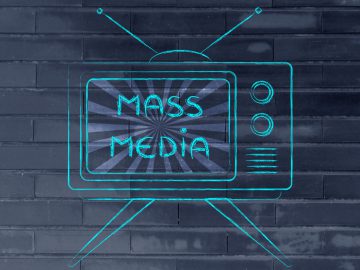 Image Credit: DepositPhotos
Image Credit: DepositPhotos
Tipping has been a long-standing tradition in many service industries, but it’s time to take a closer look at this practice and consider fairer alternatives. The current tipping system often leaves workers with unpredictable incomes and places an unfair burden on customers to supplement wages.
The federal minimum wage for tipped workers stands at a mere $2.13 per hour. While some states have higher minimums, most still maintain a significantly lower hourly wage for tipped workers compared to other jobs.
The need for change is clear. Workers deserve stable, livable wages that don’t depend on the whims of customers or the fluctuations of business. At the same time, customers shouldn’t feel obligated to directly subsidize worker wages through tipping.
This article presents 20 alternatives to the traditional tipping model, categorized into consumer-driven solutions, employer-led initiatives, and government policies. Each approach aims to address the shortcomings of the current system while promoting stability, fairness, and dignity for workers in the service sector.
Starting with the Consumer-Side Alternatives, let’s look at some ways customers and businesses can work together to ensure fair compensation for service workers.
What are your thoughts on these alternatives? Have you seen any in action? Let us know in the comments!
Transparent Pricing


Imagine walking into a restaurant and seeing menu prices that include the full cost of your meal, including service. This approach eliminates the need for mental calculations and ensures workers receive fair wages without relying on customer discretion.
Recent developments in California, through legislation like SB 478, have emphasized the importance of price transparency in the restaurant sector. This system allows customers to make informed decisions about their spending while providing more stable income for workers.
It also simplifies the dining experience, removing the awkwardness of deciding how much to tip at the end of a meal.
Related: I Am Tired of Tipping: 15 Places You Do Not Need to Tip
Earn Free Gift Cards
Swagbucks: Coupons, Paid Online Surveys & Free Gift Cards
Do you want to make money online simply by searching, shopping, surveys, or playing games?
Pros:
- Account creation is free
- Big bonus on sign up
- Many ways to earn free money
- Mobile-friendly rewards site and apps
- Simple to complete tasks
- $10 to sign up
Cons:
- Not exactly passive income
- Redeeming SB points sometimes takes awhile
- It isn’t easy to qualify for all surveys
- Customer service isn’t the greatest (or fastest)


Service Charge Inclusion


Some high-end restaurants have already adopted this practice, and it could be more widely implemented. A mandatory service charge added to each bill ensures workers receive a consistent income regardless of individual customer decisions.
Recent report indicates that implementing a service charge can lead to a more stable income for service workers. This approach takes the guesswork out of compensation for both customers and workers.
It also allows businesses to more accurately predict their labor costs and adjust prices accordingly.
Related: The Rise of Service Fees: Are They Replacing Tips?
Direct Payment to Workers


With the rise of digital payment systems, it’s now possible for customers to tip workers directly through apps or other platforms. This ensures tips go directly to the service provider without employer interference.
Direct payment systems can increase transparency and give customers more control over how their money is distributed. They also provide an opportunity for workers to receive immediate feedback and recognition for their service.
This method could be particularly beneficial in industries where workers move between different locations or work for multiple employers.
Related: 22 Ways Technology Has Made Americans Lives Worse
Customer Feedback Systems


Instead of relying solely on tips, businesses could establish platforms for customers to provide feedback that influences wages and bonuses. This system would reward good service without the inconsistency of tipping.
Customer feedback systems can create a more direct link between service quality and compensation. They also provide valuable data for businesses to improve their operations and identify top-performing employees.
This approach encourages a culture of continuous improvement and customer satisfaction.
Related: Just Say No To Tip-Flation: 13 (Mostly) Polite Ways to Say No to Leaving Tips
Loyalty Programs


Many businesses already use loyalty programs to encourage repeat customers. These programs could be expanded to indirectly benefit service workers through increased business and more stable work hours.
Loyalty programs can create a win-win situation for customers, businesses, and workers. They encourage customer retention, which leads to more consistent business and potentially higher wages for workers.
These programs can also provide valuable data on customer preferences, allowing businesses to tailor their services and potentially increase profits, which could be shared with workers.
Related: Price Check: Are Americans Paying Fair Prices Compared to the World?
Higher Base Salaries


Moving to Employer-Side Alternatives, one of the most straightforward solutions is for employers to pay service workers a living wage. This reduces reliance on tips and provides financial stability for workers.
According to the MIT Living Wage Calculator, the living wage for a single adult in the U.S. varies by location but averages around $25.02 per hour nationally in 2023. This is significantly higher than the current federal minimum wage of $7.25 per hour.
Paying higher base salaries might require businesses to adjust their pricing or operations, but it could lead to better employee retention, higher job satisfaction, and improved service quality.
Related: Are You Lower Middle Class? 28 Signs Someone Is Lower Middle Class
Comprehensive Benefits Packages

 Image Credit: Pexels
Image Credit: Pexels
Money isn’t the only form of compensation that matters to workers. Offering benefits such as health insurance, retirement plans, and paid leave can significantly enhance workers’ overall compensation and quality of life.
In fact, 43% of employees have said their current benefits packages have kept them in their current role. Comprehensive benefits can make service industry jobs more attractive and sustainable as long-term careers.
They can also help businesses attract and retain skilled workers, reducing turnover costs and improving service quality.
🙋♀️If you like what you are reading, then click like and subscribe to my newsletter. We share tips to waste less time and money.
Performance Bonuses


Performance-based bonuses offer a way to reward employees for exceptional service while promoting a culture of excellence. This system encourages workers to consistently deliver high-quality service, knowing their efforts will be recognized and rewarded.
Performance bonuses can be based on various metrics, such as customer satisfaction ratings, sales targets, or efficiency measures. This approach gives workers a clear path to earning more based on their own efforts and skills.
It also helps businesses identify and retain their top performers, leading to better overall service quality.
Related: The Future of Tipping: Is a No-Tip Culture on the Horizon?
Flexible Scheduling

 Image Credit: Pexels
Image Credit: Pexels
Offering flexible work hours can greatly improve job satisfaction and retention for service workers. Many people choose service industry jobs for their flexibility, and enhancing this aspect can make these positions more attractive.
Flexible scheduling allows workers to better balance their work with personal responsibilities, education, or other commitments. It can also help businesses manage their staffing needs more efficiently, adjusting to busy and slow periods.
This approach shows workers that their employers value their time and personal lives, promoting a more positive work environment.
Related: Industries Causing Burnout: Is Yours on the List?
Employee Ownership Models

 Image Credit: Pexels
Image Credit: Pexels
Cooperative business models where workers have a stake in the company’s success can transform the typical employer-employee relationship. When workers are part-owners, their interests align more closely with the company’s success.
This model can lead to increased engagement, better decision-making, and a stronger sense of community within the business. Employee-owned companies often see improved productivity and customer satisfaction, as workers are more invested in the company’s performance.
This approach can create a more equitable distribution of profits and give workers a voice in company decisions.
Related: 20 Traditions That Americans Are Losing To “Progress”
Regular Pay Raises


Implementing a structured system for pay raises based on tenure and performance can provide workers with a clear path for career growth. This approach gives employees something to work towards and helps retain experienced staff.
Regular pay raises show workers that their growing skills and loyalty are valued. They also encourage continuous improvement and professional development.
A transparent pay raise system can boost morale and motivation, leading to better service and increased job satisfaction.
Related: How to Ask for a Raise: The Ultimate Guide To Get What You’re Worth
Training and Development Opportunities


Investing in employee training programs enhances skills and opens doors for career advancement, potentially leading to higher wages over time. These programs can cover technical skills specific to the job, as well as soft skills like customer service and communication.
Training opportunities show workers that their employer is invested in their growth and success. They also benefit the business through improved service quality and increased employee versatility.
Ongoing training can help workers stay engaged with their jobs and adapt to changing industry trends.
Related: 30 Life Skills Younger Generations Are Losing
Recognition Programs

 Image Credit: Pexels
Image Credit: Pexels
Creating programs that recognize and reward outstanding service can promote a positive work environment and boost employee morale. Recognition can take many forms, such as employee of the month awards, public praise, or small bonuses for exceptional performance.
These programs show workers that their efforts are noticed and appreciated. They can also create healthy competition and encourage all employees to strive for excellence.
Regular recognition can help create a culture of appreciation within the workplace, leading to higher job satisfaction and better retention rates.
Related: 20 Reasons Gen Z Can’t Get a Job, and Why Companies Won’t Hire Them
Minimum Wage Increases


Shifting to Government-Side Alternatives, advocating for higher minimum wage laws ensures all workers receive a fair income regardless of tips. Data from the Economic Policy Institute shows that raising the minimum wage to $15 an hour would benefit over 40 million workers in the U.S.
Higher minimum wages provide a more stable income and reduce reliance on tips. This change would particularly benefit service workers in states with lower costs of living, where tips might not be as generous.
Increased minimum wages can also stimulate local economies as workers have more money to spend.
Related: 13 Common Habits of Millionaires. How Many Are You Doing?
Education and Training Grants

 canva.com
canva.com
Government grants for service workers to pursue education and training can enhance their skills and employability. These grants could cover vocational training, college courses, or professional certifications.
Improving access to education can help service workers advance their careers or transition to other industries if they choose. This investment in human capital can lead to a more skilled workforce overall, benefiting both individuals and the broader economy.
Education grants can also help attract more people to service industry jobs, viewing them as stepping stones to future opportunities.
🙋♀️If you like what you are reading, then click like and subscribe to my newsletter. We share tips to waste less time and money.
Childcare Support


Offering subsidized childcare services can help service workers balance work and family responsibilities, improving job retention. Many service jobs require evening or weekend hours when traditional childcare might not be available.
Government-supported childcare programs could fill this gap, making it easier for parents to work in the service industry. This support can be particularly valuable for single parents or low-income families.
Reliable childcare allows workers to focus on their jobs without worrying about their children’s well-being, potentially leading to better job performance.
Related: 23 Things Kids Over 5 Should Stop Doing
Universal Healthcare


Implementing universal health care systems can reduce the financial burden on service workers, allowing them to focus on their jobs without the stress of medical expenses. Many service jobs don’t offer health insurance, leaving workers vulnerable to high healthcare costs.
Universal healthcare would provide a safety net for all workers, regardless of their employment status or hours worked. This system could lead to a healthier workforce overall, with workers more likely to seek preventive care and early treatment for health issues.
It could also reduce employee turnover related to health problems or the need to find jobs with better benefits.
Related: 30 Ways to Save on Prescription Medications
Paid Sick Leave Policies


Mandating paid sick leave protects service workers from losing income when they’re ill, promoting a healthier workforce. This policy is particularly important in the service industry, where workers often interact closely with the public.
Paid sick leave allows workers to stay home when they’re unwell without fear of lost wages. This can help prevent the spread of illnesses among both workers and customers.
It also shows workers that their health and well-being are valued, potentially increasing job satisfaction and loyalty.
Related: The Real Reasons Most Companies Don’t Want People Over 50 Anymore
Enforcing Fair Labor Standards


Strengthening labor laws and enforcing existing regulations can ensure service workers receive fair wages, benefits, and working conditions. This includes cracking down on wage theft, ensuring proper overtime pay, and maintaining safe work environments.
Strong enforcement of labor standards creates a level playing field for businesses and protects workers their rights. It can help prevent exploitation and ensure that all service workers are treated fairly.
Consistent enforcement can also increase public trust in service industries and improve overall working conditions.
Related: Help Wanted: Industries That Can’t Find Enough Qualified Applicants
Support for Gig Economy Workers


Developing policies that extend benefits and protections to gig economy workers ensures they receive fair compensation for their services. Many service workers now operate in the gig economy, such as ride-share drivers or food delivery workers.
Policies could include minimum wage guarantees, access to benefits, or protections against sudden loss of work. Supporting gig workers acknowledges the changing nature of work in the service industry and ensures these workers aren’t left behind.
It can help create a more stable and sustainable gig economy, benefiting both workers and consumers.
Related: How to Find A Satisfying Career In 2024
Tip the Balance

 Image Credit: Pexels
Image Credit: Pexels
The service industry is ready for change. The 20 alternatives we’ve discussed offer a range of options to create a fairer, more stable environment for those who keep our restaurants, hotels, and other service businesses running smoothly.
Implementing these changes won’t be easy. It will take effort from businesses, customers, and policymakers. But every step towards a fairer system is a step in the right direction.
The next time you interact with a service worker, take a moment to consider their working conditions and how they might be improved. Small changes in our attitudes and actions can spark larger movements for change.
Together, we can create a service industry that truly serves everyone, workers and customers alike.
🙋♀️If you like what you just read, then subscribe to my newsletter and follow us on YouTube.👈
AI was used for light editing, formatting, and readability. But a human (me!) wrote and edited this.





